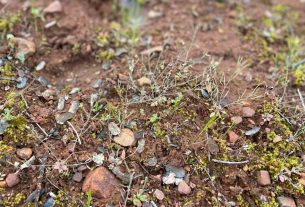Featuring the art of Ellie Biggs, F. Curtis Lubbe, Rebecca Buchs, Jude Wild and Vicky Bowskill.
Mediums include: pen and watercolour, ceramics and pipe cleaners, ballpoint pen, AI and oils on canvas. These artworks come from Australia, The Czech Republic, Switzerland and the UK.
Ellie Biggs



Ellie Biggs is a visual artist based in Western Australia. She is inspired by the colour vibrancy of nature and uses her technical training in geography and sustainability to bring environmental and societal knowledge to her audience through acrylic and watercolour [www.elliegeoart.com @elliegeoart].
F. Curtis Lubbe

An assortment of perennial herb dolls. Storage organs/bodies are made of ceramics, with roots and foliage made of pipe cleaners. Herbaceous perennial plants keep their bodies (storage organs) belowground to persist through seasonal and recurrent disturbances. These organs are generally stem derived (such as rhizomes) or root derived (such as taproots) and contain water, carbohydrates, and other substances for regrowth and stress mediation. From left to right: root fragment, root fragment, epigeogenous rhizome with root tubers, bulbs, hypogeogenous rhizome, bulb, nonclonal plant with taproot, epigeogenous rhizome, root fragment, and stem tuber. For more details and examples, see ‘Temperate herbs: An architectural analysis’ by J. Klimešová, (2018).


Rebecca Buchs


I mostly use watercolors, ballpoint pens, fine liners and my iPad for drawing and painting.
I draw what comes to mind. Since I was a small child, I always had stories and ideas in my head and I remember vividly how frustrated I felt when I couldn’t draw them. But I loved to draw and I never stopped. Today I am closer to my goal of transferring parts of my vivid (and sometimes quite melodramatic) imagination onto paper and I feel happier about my works.
When I create, I let the drawing or painting grow organically without sketching beforehand. This is easier digitally since you can try again if you don’t like a brush stroke or how a face turned out. But having lines fixed on paper without the ability to overthink, means I stop questioning myself. In those moments I focus on the flow and rhythm. Trust, for me, is a big part of art. Trust in myself to be good enough, trust in my audience to be gentle with the things that still don’t look as pretty as I wish them to and trust in the process. Even if something looks rough and undefined it will grow into something that can be appreciated. The process that occurs while I create my art isn’t just about art skills, but also of how I see life. It’s a process of learning. Of wrong angles, messy lines and wonkily applied paint. But also of discoveries, fun and contentment [@brocci.draws].
Jude Wild

The Lost Garden by Jude Wild [oil on canvas]. My painting is inspired by a recent visit to The Lost Gardens of Heligan in Cornwall. A magical place steeped in history with a wonderful selection of plants. I love the fact that it was lost to humans eyes and interference for decades and basically became an exotic wilderness. I’ve never seen such giant rhododendrons. Sadly most of the gardeners were called up for the first world war and died in the trenches so I’ve included the ghosts of some of them in my painting [@JudeWildArtist].

Vicky Bowskill

Citation: Bowskill V. and Tatarenko I. (2021) From Shoots to Roots: revealing the above and below ground structure of meadow plants. Floodplain Meadows Partnership.
CC-BY-NC-SA [@vicky_bowskill].



Thank you to our December artists for showcasing their work! If you would like to send in artwork for the January Gallery the details are here: https://jecologyblog.com/2023/11/10/calling-all-aesthetic-activists/ We look forward to hearing from you.
